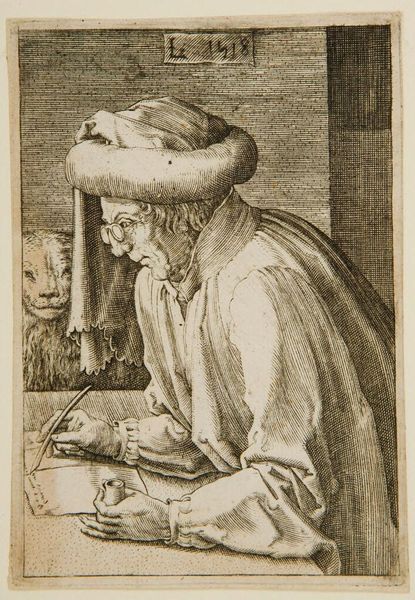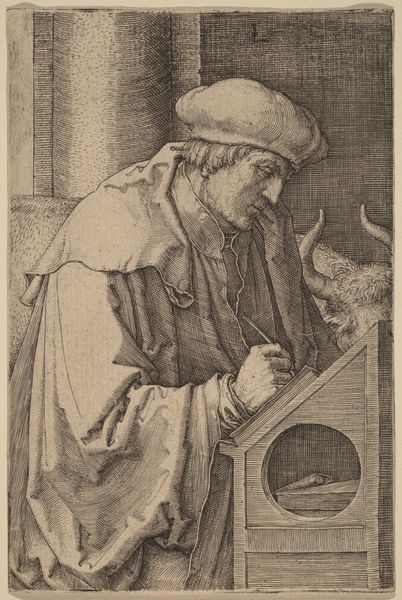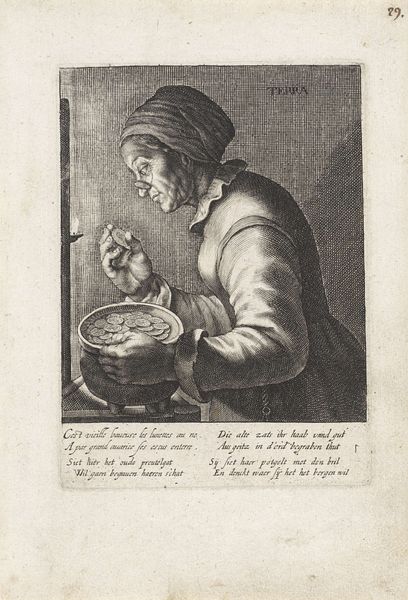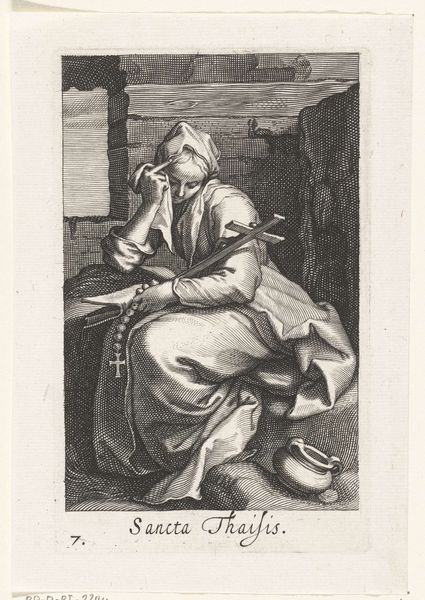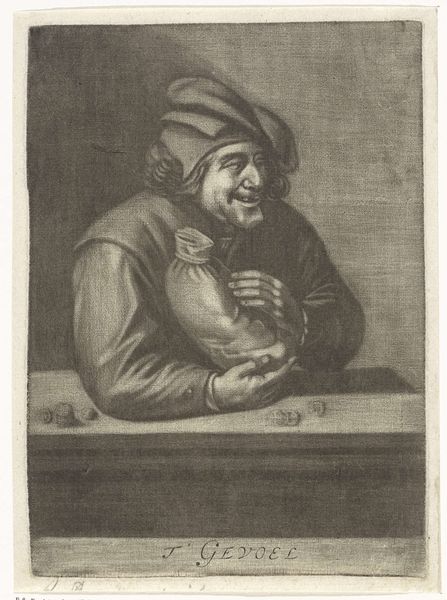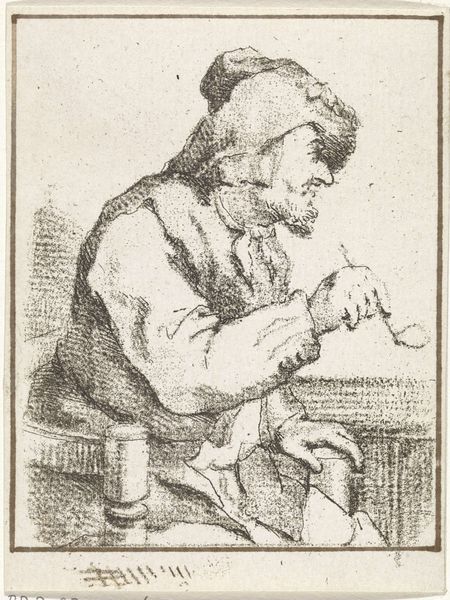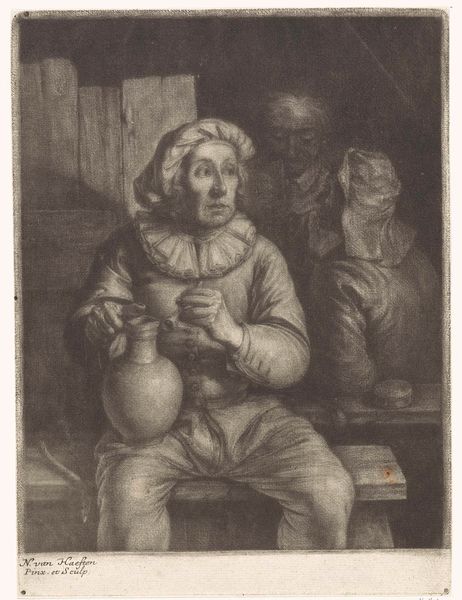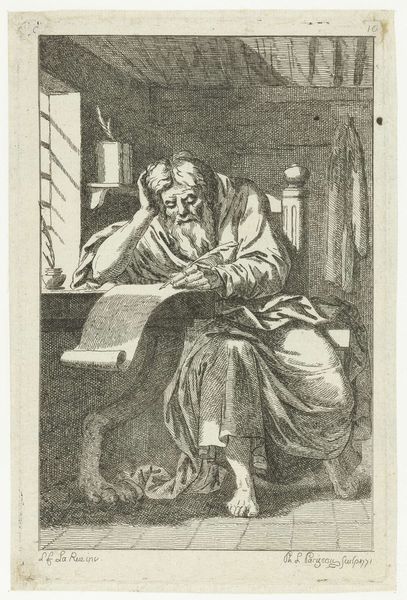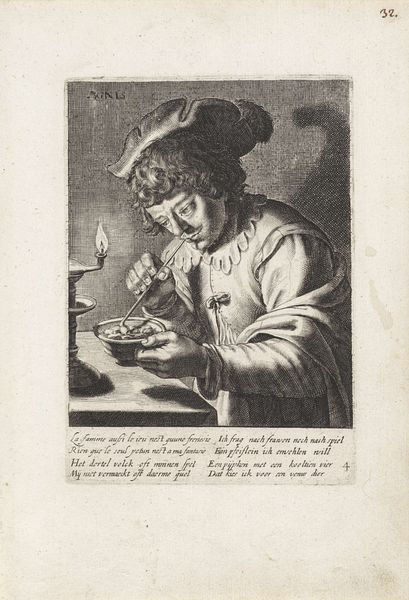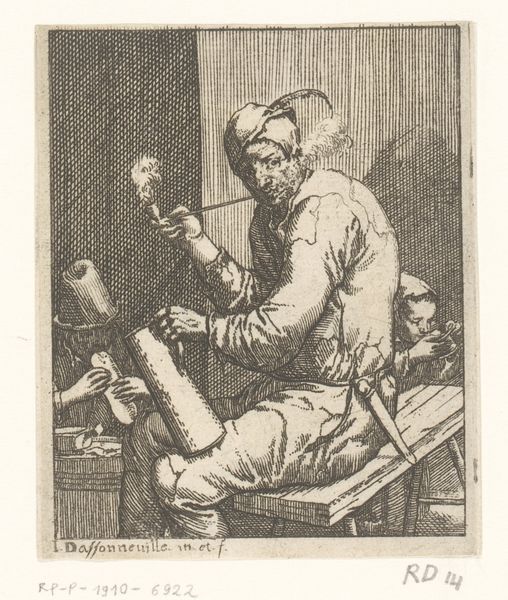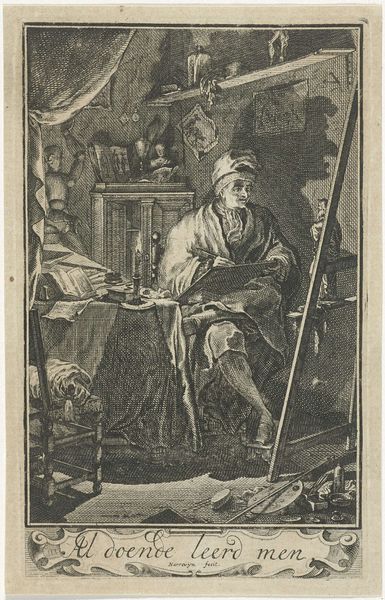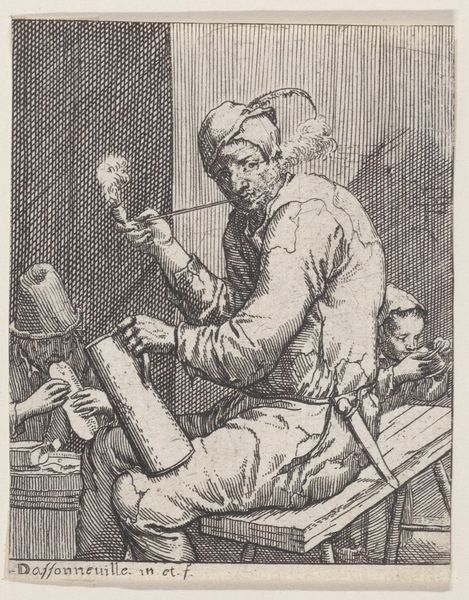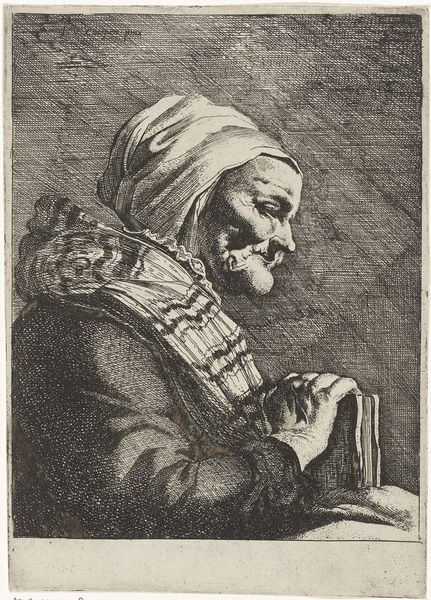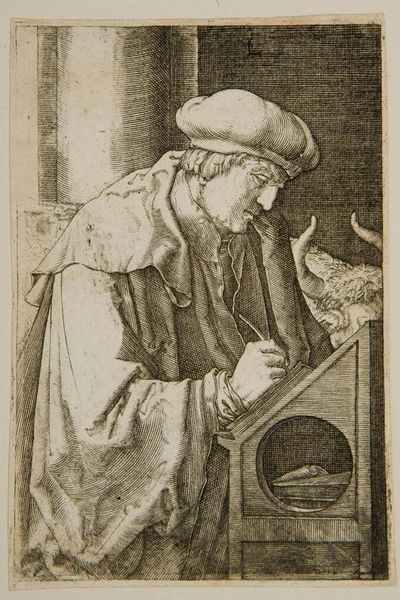
print, engraving
#
portrait
#
medieval
# print
#
old engraving style
#
figuration
#
line
#
portrait drawing
#
northern-renaissance
#
engraving
Dimensions: height 110 mm, width 75 mm
Copyright: Rijks Museum: Open Domain
Editor: Lucas van Leyden's "The Evangelist Mark," created in 1518, is an engraving with incredible detail. I’m struck by how intimate it feels, even though it's a religious subject. What draws your attention to this piece? Curator: Beyond the detailed lines characteristic of Northern Renaissance prints, it's crucial to consider the historical context. Prints like this circulated widely, acting as powerful tools in disseminating not only religious imagery, but also humanist ideas. Did prints affect access to and understanding of religious and scholarly ideas at the time? Editor: That’s an interesting point! Before, religious art and literacy were in the hands of a few. Now, with a growing middle class and access to prints, an engraving of an evangelist makes religious study much more public and accessible, right? Curator: Exactly! Look closely at the details: Saint Mark’s glasses and writing tools mark him as a scholar, diligently working, not some ethereal figure on high. How does this presentation challenge earlier, perhaps more formal, depictions of religious figures? Editor: It makes him more human, less distant. And I’m just noticing the lion in the background, so subtly placed, acting as his symbol… Curator: Symbolism placed within reach! And it becomes quite different from a grand altarpiece displayed only in churches or aristocratic settings, shaping how viewers interacted with the divine. Editor: So the impact of the artwork extends far beyond the image itself – it democratized religion! That definitely gives me a new perspective. Thanks! Curator: Indeed. Seeing art through the lens of cultural access reveals the agency artists held in shaping belief systems.
Comments
No comments
Be the first to comment and join the conversation on the ultimate creative platform.
